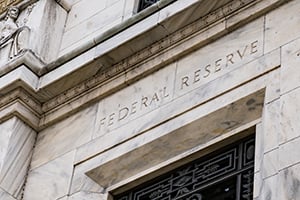 Yesterday’s Fed statement and press conference revealed a significant reversal from previous meetings. When Chair Powell told markets to “drop dead” a few months ago, the consensus was that the Fed was committed to normalizing policy despite the market risks. Since then, and especially with the most recent statement and conference, the Fed has done a full 180. Now, it is acting to support markets and the economy.
Yesterday’s Fed statement and press conference revealed a significant reversal from previous meetings. When Chair Powell told markets to “drop dead” a few months ago, the consensus was that the Fed was committed to normalizing policy despite the market risks. Since then, and especially with the most recent statement and conference, the Fed has done a full 180. Now, it is acting to support markets and the economy.
The Powell put is in full force!
You can clearly see this support not only in the Fed’s statement but also in the economic projections. The committee does not expect any more rate hikes this year, and it plans to stop running down the balance sheet in September. In other words, monetary policy is now about as tight as it can get and has—in the Fed’s opinion—pretty much normalized. This is confirmation of what the market has thought, which is positive. Markets reacted by taking down longer-term rates across the board.
The Fed’s shift was clearly due to concerns that the economy was slowing more than expected and that it might be reaching a tipping point. It said explicitly that growth has “slowed” since the fourth quarter, household spending and business investment growth are “slower,” and inflation has declined. Given all that, the decision makes sense.
What are the markets seeing?
Markets, however, may be seeing something different. Slower growth is not good. But slower growth combined with easy money is what has brought us to where we are today, and a continuation of that path may well be just fine. More, when you look at the data, there are two reasons to be cheerful: (1) the slowdown may have been largely a result of worries over the government shutdown, and (2) the first quarter has been slower for the past several years, only to rebound later.
There is good data to support both of these ideas. If they prove out, in a couple of months, we could find ourselves in a market sweet spot, with faster growth and cheap money. Even the Fed’s data suggests that will be the case, with a sharp slowdown expected to rebound later. Small wonder markets are being cheerful despite the economic worries embedded in the statement.
There are risks, of course
That’s not to say we don’t have risks—we do. The major one, of course, is that the accelerated growth that could happen simply doesn’t. The Fed is managing risk as much as anything here. With the debt ceiling debate pending, with Brexit still hanging fire, and with the trade talks unresolved, I am quite sure Jay Powell and his team are saying that we can always tighten policy later but let’s support the economy and markets now. A very reasonable position.
Meet the new boss (same as the old boss)
But it’s a position that resembles more than a bit that of the Yellen and Bernanke Feds. This is what markets see, and why it is likely they will end up reacting positively. An easy Fed, focused on not allowing a slowdown or a market drawdown, has and is likely to keep markets in as sweet a spot as possible given underlying conditions. Regardless of what happens, the Fed said yesterday that the policy going forward will be very similar to that of the past 10 years.
That policy got us here, which is the good news. The bad news is that policy was designed to support the economy from a financial disaster. Apparently, the Fed is still concerned about that, 10 years on. What the Fed is really saying? We are still not back to normal.


 Print
Print

